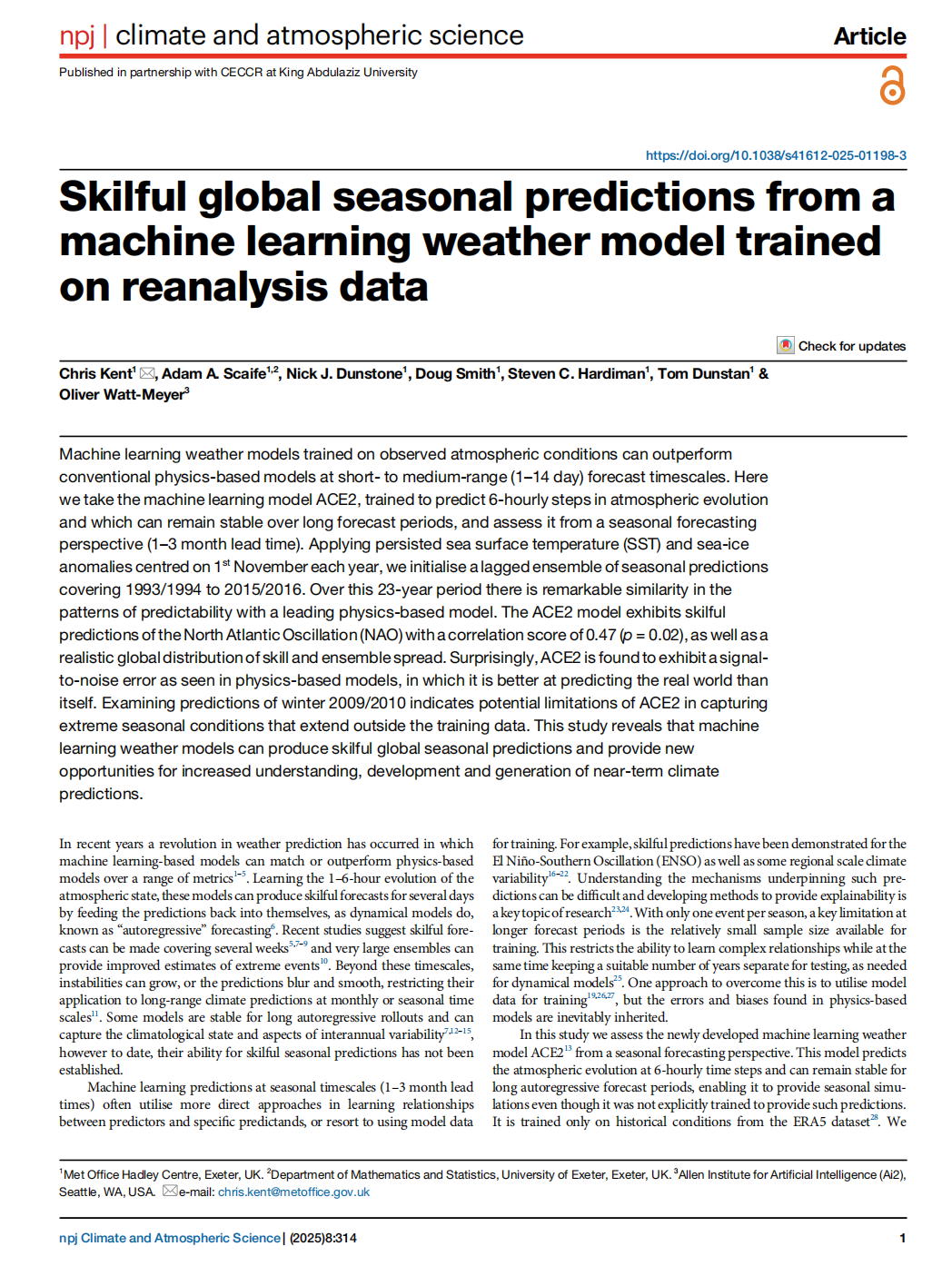Command Palette
Search for a command to run...
Skilful global seasonal predictions from a machine learning weather model trained on reanalysis data
Chris Kent Adam A. Scaife Nick J. Dunstone Doug Smith et al

Abstract
Machine learning weather models trained on observed atmospheric conditions can outperform conventional physics-based models at short- to medium-range (1–14 day) forecast timescales. Here we take the machine learning model ACE2, trained to predict 6-hourly steps in atmospheric evolution and which can remain stable over long forecast periods, and assess it from a seasonal forecasting perspective (1–3 month lead time). Applying persisted sea surface temperature (SST) and sea-ice anomalies centred on 1st November each year, we initialise a lagged ensemble of seasonal predictions covering 1993/1994 to 2015/2016. Over this 23-year period there is remarkable similarity in the patterns of predictability with a leading physics-based model. The ACE2 model exhibits skilful predictions of the North Atlantic Oscillation (NAO) with a correlation score of 0.47 (p = 0.02), as well as a realistic global distribution of skill and ensemble spread. Surprisingly, ACE2 is found to exhibit a signal-to-noise error as seen in physics-based models, in which it is better at predicting the real world than itself. Examining predictions of winter 2009/2010 indicates potential limitations of ACE2 in capturing extreme seasonal conditions that extend outside the training data. This study reveals that machine learning weather models can produce skilful global seasonal predictions and provide new opportunities for increased understanding, development and generation of near-term climate predictions.
Build AI with AI
From idea to launch — accelerate your AI development with free AI co-coding, out-of-the-box environment and best price of GPUs.